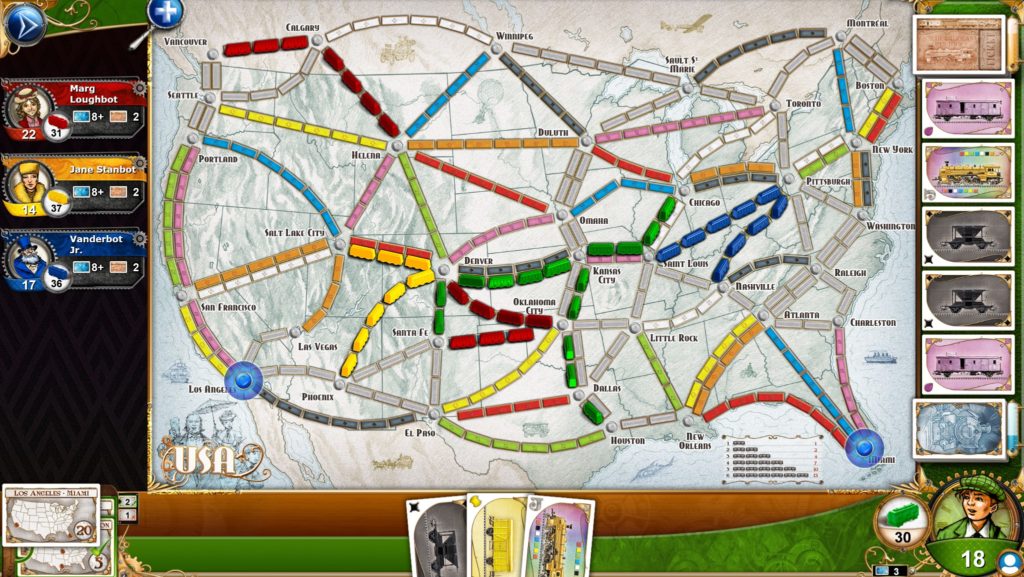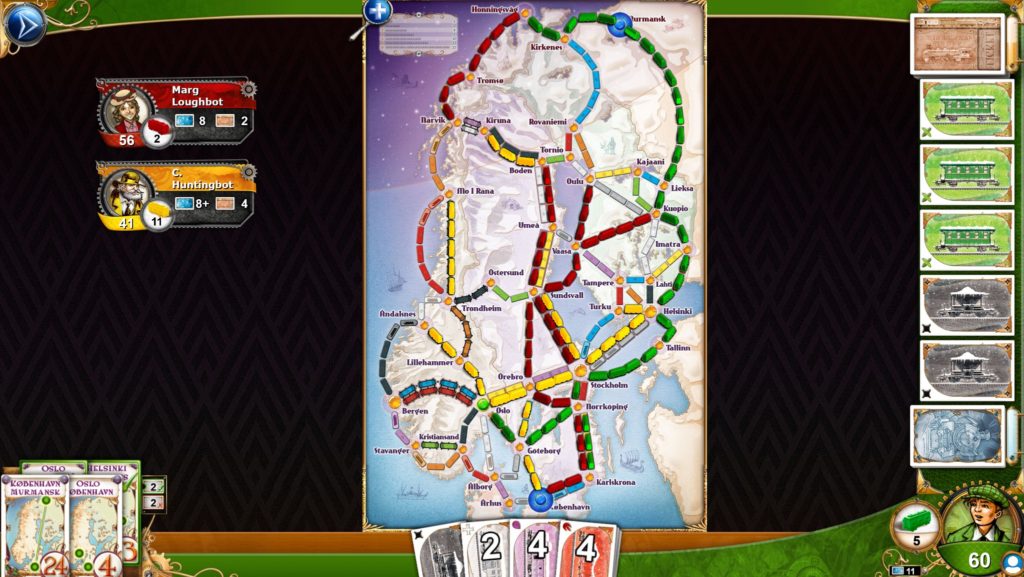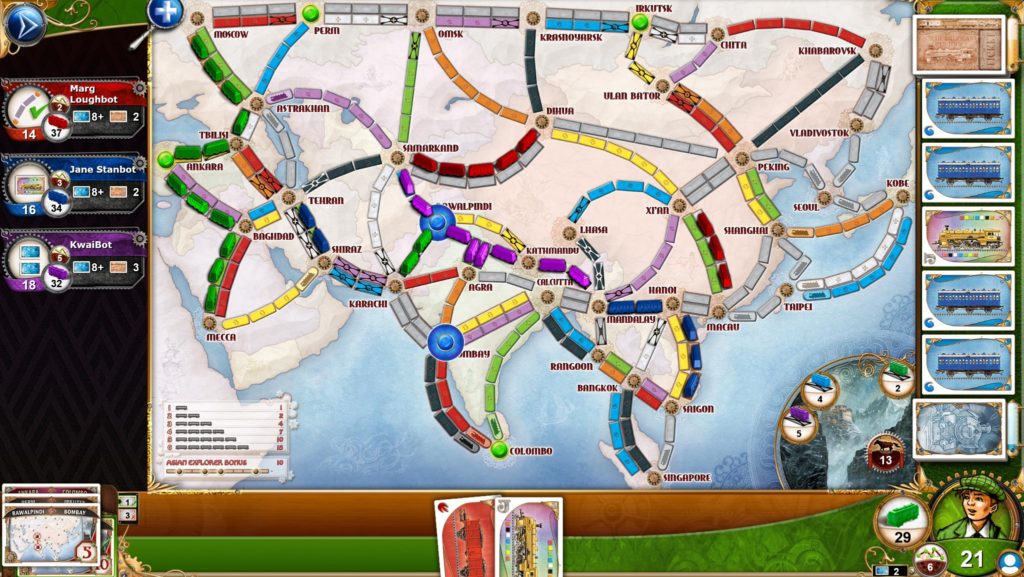
The last game in the bundle of digital versions of board games that I bought so very long ago is good, old, boring Ticket to Ride. This is one of the very first board games we learned to play in Kota Kinabalu. Given that it has dirt simple rules and that I would only be playing against AI, I thought I’d just briefly check it out. The good thing is that this version comes with nearly every map ever made for the game. With the slight rule variations on each of them, it still takes a little bit of time to give each map a test run.
The basic US map is of course the most familiar while the various 1910 expansions add new life to it without really adding new mechanics. The basic Europe adds a bit of randomness in the form of the tunnels and forces you to save up locomotives for the ferries. The stations also allow you to borrow an opponent’s route to complete one of your own tickets. However I find that I never need it as you don’t usually find yourself blocked on this map. I’ve never seen the AI use the stations either. The 1912 expansions are the equivalent of the US ones. I find that I generally prefer the Mega variant. I like punching lots of tickets.

The Switzerland and Nordic maps are somewhat similar in that locomotives can be taken just like normal train cards but are also are more limited in what they can do. I find that I dislike both. The Nordic one has a vertically oriented map and it’s annoying to have to scroll around on horizontally oriented screens. The Switzerland map doesn’t allow locomotives to be used as wildcards at all. Combined with the plethora of single colored routes, this means there is a lot of blocking and a lot of waiting around just endlessly drawing cards blind in order to get just the right card you need. The AI does the same, spending turn after turn blindly drawing cards until you accumulate a hand full of useless cards. There should be a rule saying that if all players spend a full round doing only that, the slate of available cards should be automatically refreshed.
By far the most complex of the maps I think is the United Kingdom one due to the technology cards. You need to pay for them to claim anything longer than 2-train routes and also to enter different areas of the map. They also give bonuses to scoring. It’s quite a lot of effort to work through the implications. I don’t find the Asia map to be anything interesting though all the mountain routes eat up a lot of extra trains. By contrast the India is very interesting as the Mandala scoring bonus encourages you to try to connect your cities in a grand circle instead of the usual more or less straight line.

One of my favorite maps may be Germany: basic rules, mostly single routes so lots of potential for blocking but country to country tickets so some viability of different routes plus tunnels add a little randomness. I also like the Pennsylvania map as well. The short single routes at key locations are fiercely fought over the beginning and basic rules throughout. The stock options are an extra scoring mechanic that doesn’t really affect your building but something to think about when choosing which company to get shares in. It’s an easy map to get high scores on too due to the shares.
Though this digital version works there are quite a few user interface issues. On some maps for example, you get the wrong rulebook when you click the help icon. The different AI personalities do play differently and some maps even come with their own specific AIs, which is good. However I notice that the Jane Stanbot AI consistently crashes on certain maps. I also don’t understand why the maps use relatively low resolution images, low enough that sometimes you can’t make out the icons on the train symbols which I need to help with my color blindness. Finally there are a lot of achievements for this and some of them are very hard to get. I mean, do they seriously expect people to play thousands upon thousands of games of this? I mean it’s a solid design that makes for a good, short distraction but there’s still only so much time that something so relatively simple can amuse me.
